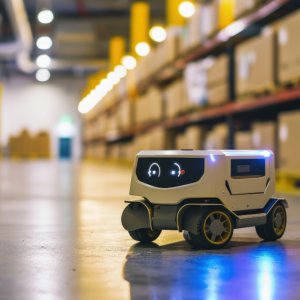
Digitalization: A Brave New World
Industry 4.0. The Fourth Industrial Revolution. The Internet of Things. Whatever you want to call it, digitalization is changing the face of mining, challenging conventional methods and catapulting the sector into the modern era.
Boosted by recovering metal prices, companies now have more time and resources to put into research and development and revolutionary techniques are popping up across the mining value chain. 3D mapping and drone technology guide prospectors toward previously undetectable deposits, advanced radiocommunication techniques keep workers safer than ever and innovative concepts like biomining offer a novel approach to mineral processing. All the while, mine managers can keep track of every aspect of the mining process to minute detail using Big Data management systems and automated vehicles.
“With digitalization, plant managers can reduce the time and money they spend on maintenance and operations by up to 80 percent,” says Roberto Pérez, Head of Solutions at Siemens Mesoamerica. “All the data is already available, but the problem is that it is spread out over all the assets on a mine. Digitalization allows managers to access all the data in one place and make a decision on the spot.”
IF IT AIN’T BROKE DON’T FIX IT
But it has not always been this way. During the downturn, operators were forced to put expensive research programs to one side and focus on short-term cost optimization. As a result, the industry garnered a reputation for adopting a conservative, “if it ain’t broke don’t fix it” approach to technology. Now, with demand for metals and minerals rebounding, operators are jumping on the opportunity afforded by wider profit margins to invest in new solutions that can have long-term benefits. “The world is changing, and companies must adapt parallel to the technology that is available,” says Pérez. “Operators have to switch their focus away from plant maintenance and toward plant optimization.”
The exploration segment is leading the way. Geological modelling software generates detailed 3D images, allowing geologists to visualize mineral deposits and removing the need for laborious manual digitalization. Companies can now dramatically reduce the risk factor attached to expensive and uninformed drilling programs. At first, geologists were skeptical – concerned by an apparent threat to the value of the skills – but the community has now come around to these solutions. “We have got past a tipping point where people have learned to trust this technology,” says Rob Ferguson, Director of Product Strategy at Leapfrog, a 3D modelling platform installed in mines throughout.
SAFETY ADVANCES
In 1978, a total of 242 miners died from work-related incidents in the US, according to the Mine Safety and Health Administration (MSHA), a product of inadequate and widely adopted safety practices. Now, radiocommunication and WiFi technology enable site managers to keep tabs on workers spread out across the labyrinth of tunnels and shafts. In 2016, the MSHA reported a total of 28 fatalities, a record low.
“Unified communications have brought radiocommunication back to the forefront of mine operations,” says Gerardo Gardea, Director General of Delta Solutions, a Monterreybased provider of radio and GPS solutions for the mining industry. “Each unit is fitted with an alarm system that sounds every time the radio is horizontal for more than 30 seconds, to warn of a worker accident or fall.”
BIG DATA, BIG IMPROVEMENTS
Complementing improvements on the technical side, Big Data technology is becoming increasingly applicable to the mining sector. Fleet management systems and inter-operable analysis have advanced to the extent that managers receive information on the real-time performance of every aspect of the mine operation, from vehicle fuel consumption and oil temperature to minute-by-minute ore extraction figures. The data is collected automatically and presented via a centralized user-friendly interface. This technology is now being developed to work between mines internationally, generating huge savings for multinational mining corporations managing assets in several jurisdictions.
But just as the world’s largest mining companies must adapt to ever-evolving technologies, so too must the labor market respond to the changes. Workers must now learn to control automated vehicles remotely and expertise in information technology is trumping traditional mining skills. This requires a change in approach throughout the value-chain, from the scientific institutions and research centers to universities, to ensure that the next generation of professionals is equipped to take the sector forward. For Schneider Electric´s Felipe Rivera, rather than fearing the consequences of digitalization, the mining community must embrace it. “The human factor will always remain a necessary part of the market and there will be a constant need for talent,” he says. “Transformation is inevitable but it does not necessarily imply a massive loss of jobs.”
















